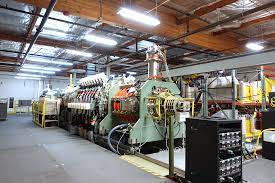Controllable nuclear fusion that produces multiples of energy output versus the energy that goes in to create the sustained reaction, has always been a 20-years-in-the-future kind of thing. So what’s changing now to put fusion power on the front burner and attract significant investment from governments and private enterprise?
Back in December 2022, the National Ignition Facility at Lawrence Livermore Laboratory in California announced that in a test it had achieved positive energy output from a controlled fusion experiment. A major press conference ensued in Washington with pronouncements of a nearer future to look forward to when we could reproduce the Sun’s energy here on Earth with zero emissions.
The Fusion Chase Involves Governments, Universities and Businesses
Creating a continuously controlled fusion reaction and not a thermonuclear bomb requires a confined environment where high densities and high temperatures can turn hydrogen gas into plasma. The luxury the Sun enjoys as a big ball of hydrogen comes from its enormous size and immense gravitational forces which serve to confine the ongoing nuclear fusion within it. But here on Earth, we need powerful magnets to replace the gravity confinement that the Sun provides. And it was thought until recently that our confinement efforts to create dense plasma faced a speed limit barrier that caused the field to break. We now know that what was called the Greenwald Limit no longer exists after experiments done at École Polytechnique Fédérale de Lausanne (EPFL) in Switzerland. So now the conditions to generate positive energy yields from controlled fusion means we are getting close to the first fusion reactors.
Enter Helion Energy and Pulse Fusion
Helion Energy is joining the lineup of companies and organizations bellying up to the fusion bar, backed by Open AI’s founder, Sam Altman and Microsoft. The latter has contracted Helion to provide power to the technology giant by 2028.
Helion is using pulse fusion with deuterium (D2O) and helium-3 (3He) as fuel. The company has developed the Trenta Magneto-Inertial system to generate a fusion reaction and excess energy. Pulsed, non-ignition magneto-inertial fusion doesn’t require big structures and big budgets to build a reactor. The company believes they are easily replicable and plans to have a plant built and operational by 2028 producing 50 Megawatts of power. That’s not big by power plant standards with enough power generated to heat and light 9,000 homes. But replicability advantages in the design could easily be strung together to get to 500 Megawatts, the power generated by a typical coal-fired thermal power station.
Trenta achieved 100 Million Celsius (over 180 million Fahrenheit) degrees in recent test firings. That’s the temperature to achieve commercial net-energy gain fusion reactions. And Trenta’s successor, called Polaris, is expected to improve on the former’s success.
Pulse fusion is as it sounds. The fusion reaction comes in short periodic pulses. And unlike other nuclear power models, isn’t designed to heat water to generate power. Instead, the fusion reaction drives charged particles to generate a current through electromagnetic coils. A feedback loop using a small portion of the generated electricity is used to power the magnets which then repeatedly deliver new pulses to the combustion chamber to keep the fusion on-off cycles going perpetually.
Helion’s use of 3He is novel for fusion reactions which traditionally use D20 and tritium (H3). The difference between 3He and H3 is the former’s atomic structure contains 2 protons and 1 neutron while the latter is the reverse with 1 proton and 2 neutrons. 3He is produced on Earth in fission nuclear power plants, or when we get to the Moon, found in abundance within the lunar regolith.
Who Are the Immediate Other Challengers?
Will Helion succeed in being first to market? I expect General Fusion in Vancouver, British Columbia to give them a run for their money. And the other close competitor in the race is likely going to be Commonwealth Fusion Systems out of Cambridge, Massachusetts. I have previously written about both of these projects as well as others in the race to deliver zero-emission fusion energy before 2030. The progress of the last half-decade makes me more an optimist than a pessimist that we will see commercial fusion operating in a plant somewhere in the U.S., Canada, the U.K. or the European Union before I turn 80 in 2029. And although fusion power doesn’t have its own nuclear waste issues, they are nothing when compared to the waste produced by fission reactors, or that produced in the air and on the ground by thermal power plants burning coal, oil or natural gas.
















